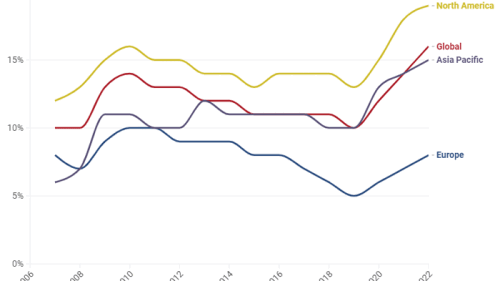Only a small fraction of the nation’s 3,330-odd counties will be affected when the temporary federal mortgage ceilings revert to lower levels on October 1. But according to one analysis, the pending change will make it more expensive and more difficult to finance more than 5 million houses.
The government has two sets of loan limits—one for Fannie Mae and Freddie Mac, which help keep local lenders flush with cash by purchasing their loans and packaging them into securities for sale to investors worldwide, and another for the Federal Housing Administration (FHA), which insures mortgages against default.
Normally, Fannie Mae, Freddie Mac, and the FHA touch roughly five out of every ten home loans. But in the absence of private securitizers, in Fannie and Freddie’s case, and with lenders willing to make the low downpayment loans allowed by the FHA, the three entities now have their hands on more than 90 percent of the market.
In most places, Fannie and Freddie’s so-called conforming loan limit is currently $417,000. But in high-cost markets such as Los Angeles and Boston, the ceiling can be as high as $729,750. The FHA has a similar maximum in high-cost areas, but its “floor” can be as low as $271,050 in some relatively inexpensive places.
But unless Congress says otherwise—and as of this writing, lawmakers have shown absolutely no interest in acting—as of October 1, the federal limits once again will be based on the permanent formula set by Congress in the Housing and Economic Recovery Act of 2008.
The maximum loan amounts won’t change in most places. But in high-cost markets, the lid will be calculated at 115 percent of an area’s median house price as opposed to the current 125 percent. And that could have a major impact on homebuyers or homeowners wishing to refinance.
Loans that lie above Fannie Mae and Freddie Mac’s reach are generally more expensive. Currently, the spread between conforming loans and “jumbo” loans above the conforming loan limit is 50 basis points, according to HSH Associates, a mortgage information service. But the great divide has been as high as 1.8 percent as recently as December 2008.
Non-FHA loans aren’t likely to be more expensive because private insurers can be expected fill the void. Indeed, some private insurers claim to be a lower-cost alternative.
But privately insured mortgages are likely to come with higher downpayment requirements and more stringent underwriting rules. And that will be the case with loans that either Fannie or Freddie can no longer acquire.
According to the Federal Housing Finance Agency, which oversees Fannie and Freddie, otherwise known as the government-sponsored enterprises or GSEs, just 250 county or county equivalent areas will be affected by the change. But the magnitude of the decline could be huge in some places.
In Monterey, California, for example, the conforming loan limit would sink $246,750, to $483,000. And in Monroe, Florida, it would drop $200,750, to $529,000.
Moreover, according to an analysis by the National Association of Home Builders (NAHB), more than 1.38 million owner-occupied homes—many concentrated along the East and West coasts—will no longer be eligible for Fannie/Freddie funding. (See which jurisdictions will be affected by the lower GSE loan limit and by how much.)
According to an analysis by the FHA, the lower FHA ceiling will affect 669 counties or their equivalent—nearly three times as many as the lower GSE maximum. The NAHB says the change will put at least 3.87 million more properties above the FHA limit.
But the change could be doubly devastating because, as NAHB economists point out in their review, every county that will see its GSE limit fall also will see a decline in its FHA ceiling.
Again, the affected areas tend to be concentrated along the coasts. In Los Angeles, for instance, the FHA loan limit would dip $104,250. And in Mendocino and San Joaquin counties, it would fall $138,750 and $184,000, respectively. But the change would hit other high-cost areas hard, too.
In Valley County, Idaho, the FHA ceiling would drop $189,950. And in Athens County, Ohio, it would fall $161,450. (See which counties are affected by the change in the FHA ceilings.)



